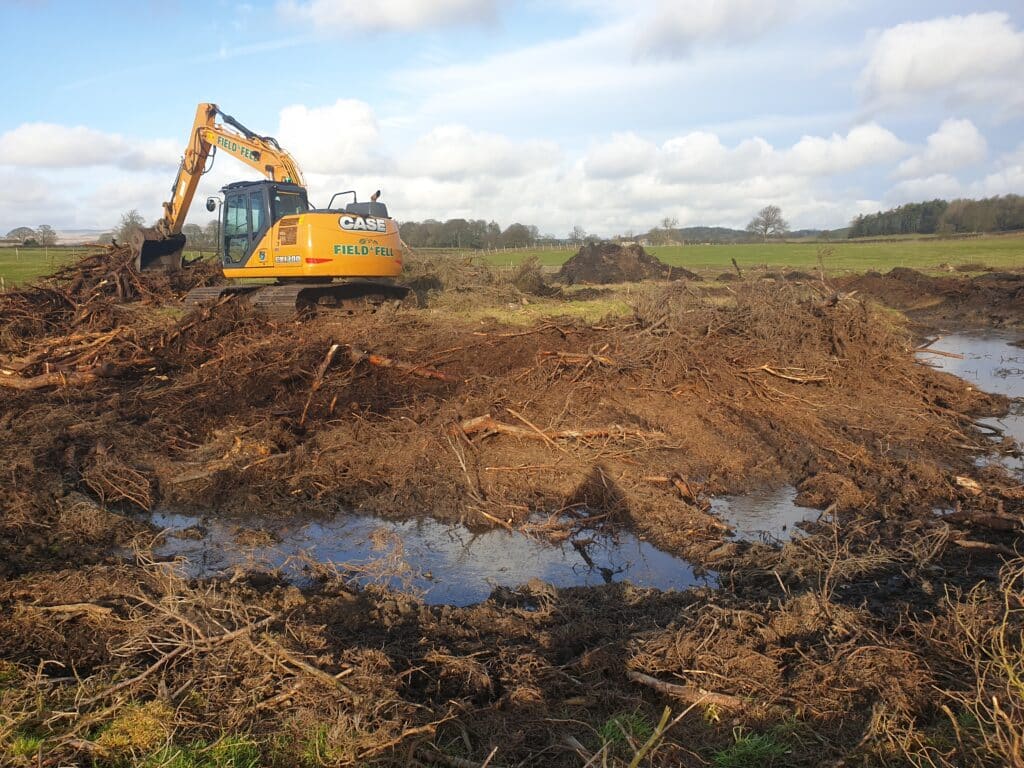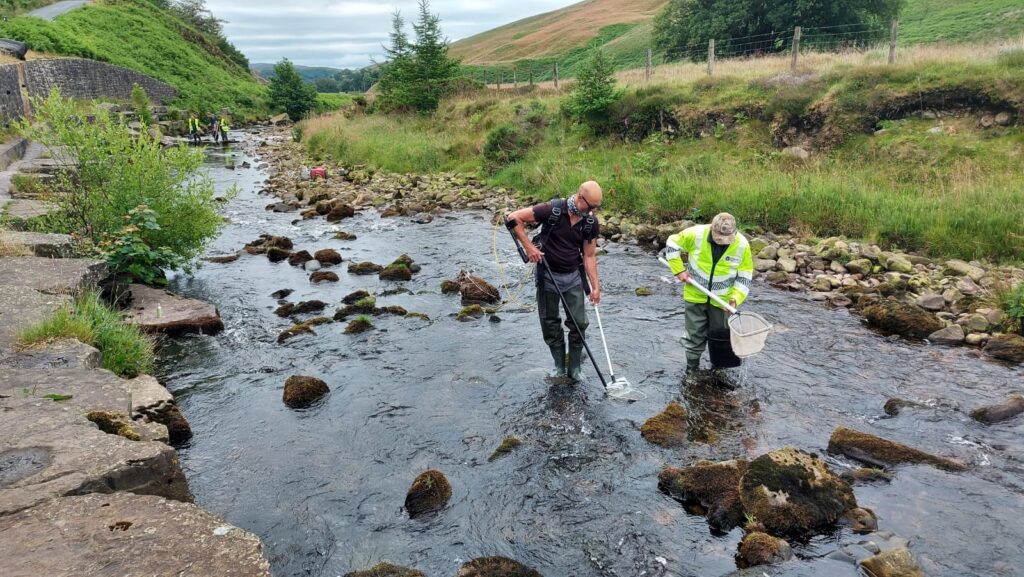An exciting new river restoration project is now underway on the Lancashire and North Yorkshire border. The project, which is based near Halton West, aims to restore and re-wiggle a 144 meter section of Ged Beck to make way for a more natural river system.

So, how do you create a more natural river?
In the past Ged Beck (a tributary of the River Ribble) has been straightened to make way for a conifer plantation, which was planted on the North bank of the Beck. However, the plantation owners have been felling the plantation. This has made way for an exciting opportunity for collaboration with Halton West Estate to restore this section to its original route.
The new channel will follow the existing paleochannel (the old natural river channel) through the footprint of the felled plantation. This work will increase the length of the beck by an incredible 116 meters. The restoration will include the installation of woody debris which will provide habitat for invertebrates and fish and help stabilise the banks. In addition to this there are also plans to improve Ged Beck’s spawning gravels. At the moment these gravels, and any eggs or baby fish) are at risk of wash out.

Is a natural river channel important?
Restoring rivers by re-wiggling takes a river that has been modified and straightened and restores it’s natural river path, complete with bends and meandering curves. This slows the flow of water meaning that, in the case of a flood event, the water takes longer to travel downstream. So, it loses some of its potentially destructive power and arrives downstream at a slower rate, preventing flash floods. Re-wiggling also creates a greater range of habitat diversity. Greater habitat diversity means a greater range of wildlife will be able to find their ideal home.
Are there any other benefits?
Once the channel restoration is complete we will livestock fence the area boundaries and plant it up with native trees. This will help to provide shade and shelter for fish and reduce run-off entering the beck from surrounding farmland.
The new curvy route of the beck also includes the reinstating of an oxbow lake for offline water storage. Furthermore, the planting of trees will slow down the flow of water as it enters the River Ribble. All this work will provide beneficial natural flood management for communities further downstream.
Ribble Rivers Trust are proud to have received the Tyrer Ecology Award for this project. Thanks to the award we will now be able to monitor the ecological, hydrological, and hydro morphological benefits of the project using priority habitat and freshwater invertebrate surveys, water testing and electric fishing surveys. All the information we collect will help us to identify improvements and inform future river restoration projects across the Ribble catchment.

This project receives funds from Environment Agency grants, with work by Field and Fell contractors.

